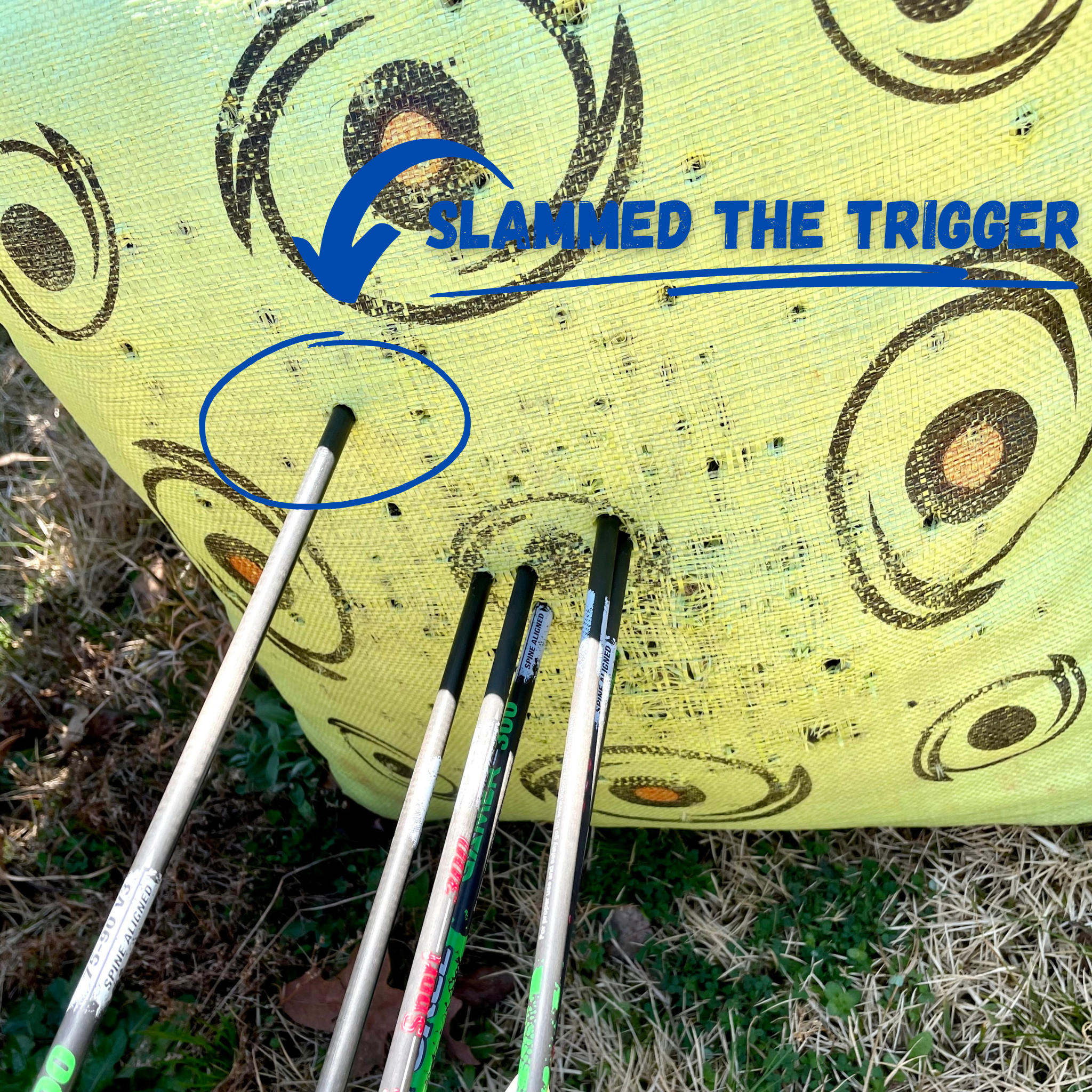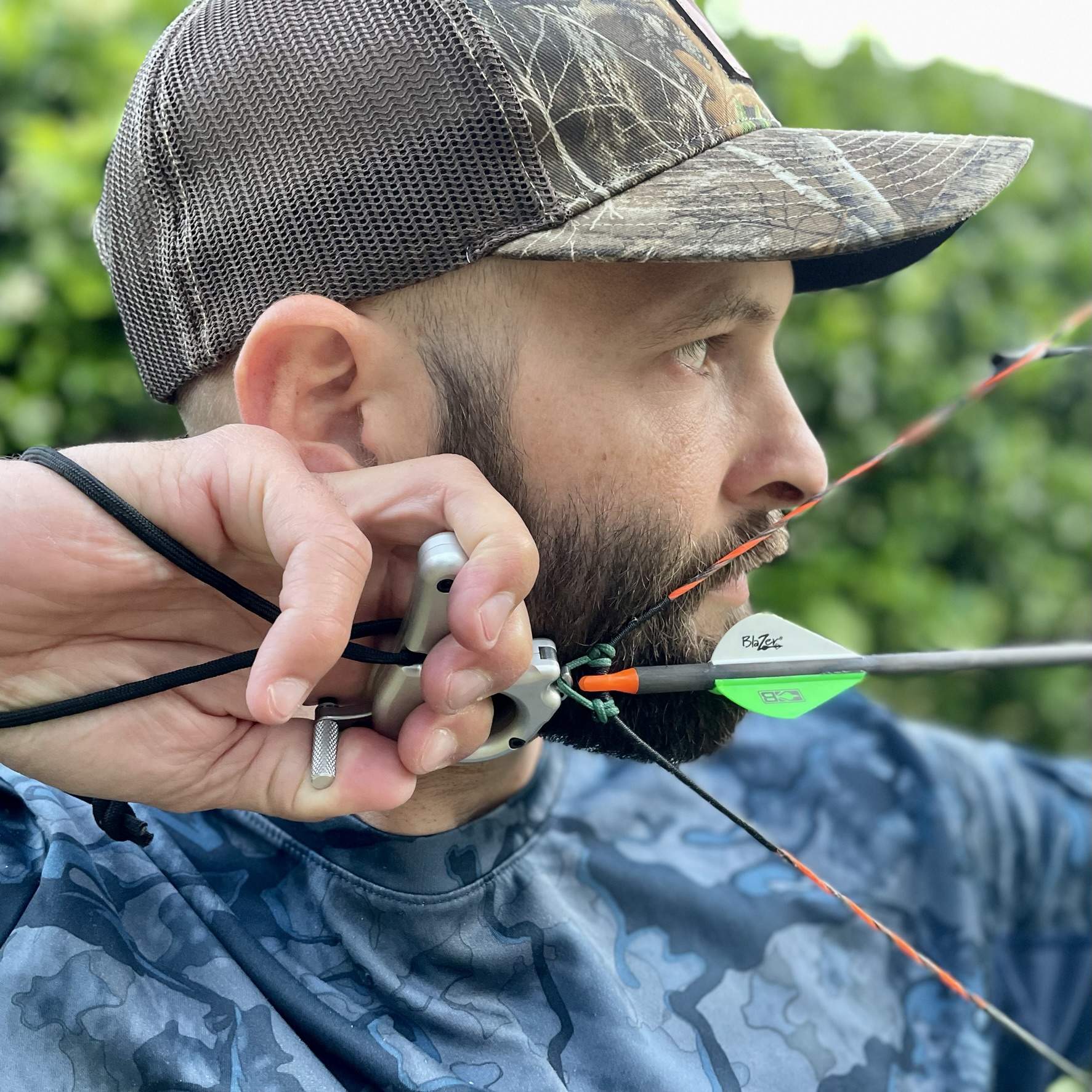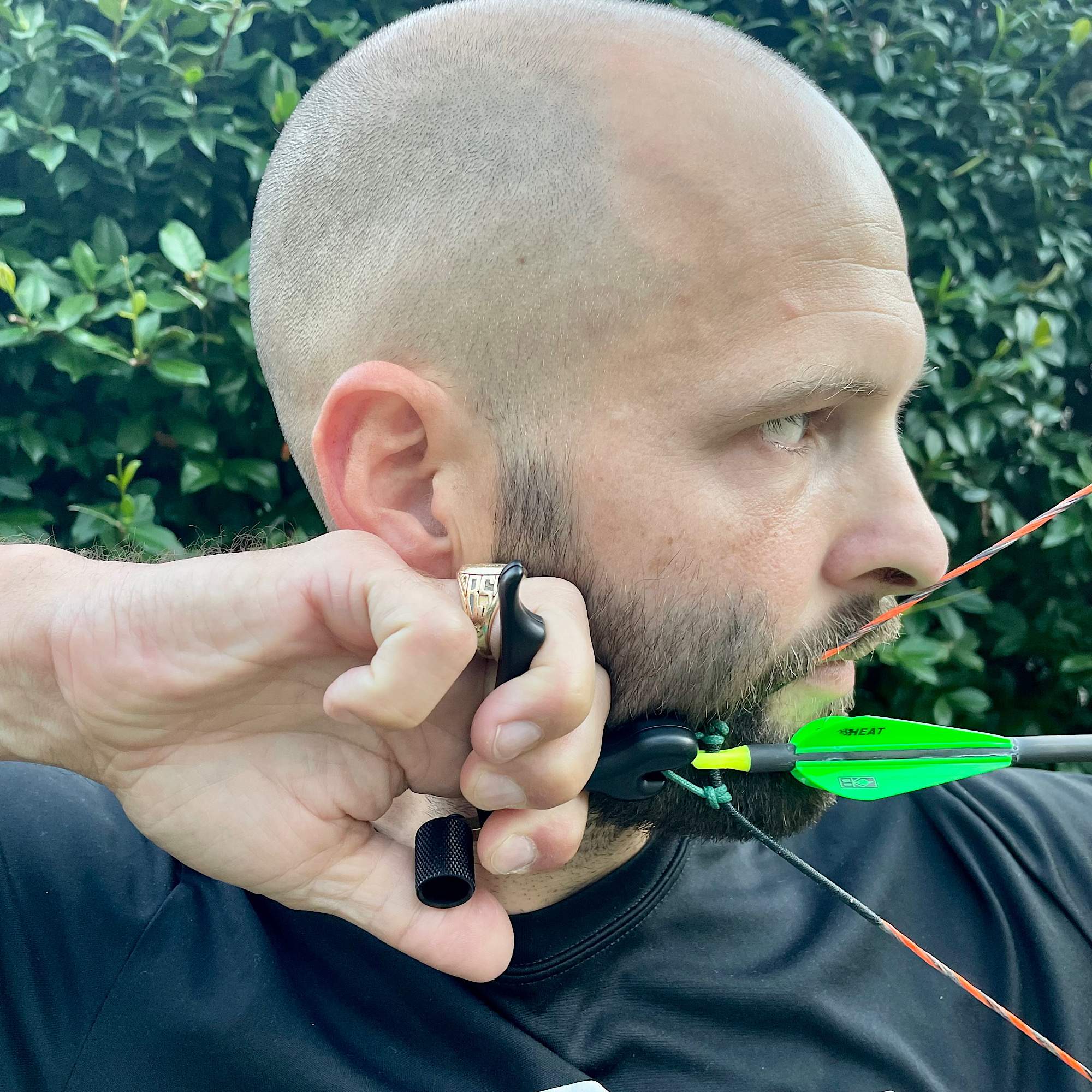The battle is as old as time . . . well not really. But it’s not young either.
People have been debating the merits of using an index style (caliper/wrist strap) release over a thumb button, and vice versa, for quite some time now.
We’re specifically talking about hunting here. I don’t think anyone is arguing that you should use an index release for competitive target archery. Just wouldn’t make sense.
But for hunting, it’s the most commonly used style out there. But is it the right style to use?
That’s the question we’re going to try and answer here. So, let’s get started breaking it down. We’ll start with the majority’s style of choice.
Index Style Release
 Ahhh the ol’ index style release – my worst enemy. Wait, did I say that out loud? It’s what 99.99999999% of all bowhunters start out with.
Ahhh the ol’ index style release – my worst enemy. Wait, did I say that out loud? It’s what 99.99999999% of all bowhunters start out with.
Not because we know how it shoots, or how comfortable it is in our hands, or even because we think it’ll give us the best chance of success in the woods.
It’s because the guy across the counter told us it’s what we needed when we got our first bow. Or maybe your Dad brought it home to you with your first bow.
In either case, we had no idea what we needed, so we started with what all the guys on TV use.
After all, they kill deer with it, so we can too. Right???
Yes and no.
Shooting one is easy(ish)
You pull it out the pack, clip it on, draw back, and slam that trigger. All feels right with the world. You just flung an arrow.
You don’t really care that you were 6 inches low and 8 inches to the left of the bullseye.
You’re new, so you’ll get better. You keep flinging ’em. One after the other. Week after week.
Until finally, you start to realize that you’ve gotten better, but your groups are pretty inconsistent.
You shoot a lot, and some days, you’re on fire! One right after the other, with a 3″ group at 20 yards one day, and the next, that group is barely breaking 8″. And 1 out of every 4 is straying off from the rest.
What in the world is going on?! Well, you never really realized that you were treating that index release like an Xbox controller, hammering that trigger every time you saw your sight pin cross the bullseye.
You’ve been timing your shots since day one. You’ve made sure you’re in complete control of when you release that arrow.
If that’s your only issue, that’s best case scenario. Worst case scenario? You’ve got more issues you may not even be aware of.
Target Panic


Index style releases are very bad about creating target panic. For anyone who may not be fully aware of what target panic is, it’s basically any impulse you have to actively “fire” the trigger when your pin crosses your desired target.
Sometimes, it causes you to “lock” below the bullseye. To combat that, you force the pin up to the bullseye and quickly hit the trigger to try and hit your mark.
If you’re there, you know as well as I do – and I’m speaking from experience – it doesn’t work. At least not consistently.
Some days, you’re just on. You can time it perfectly almost every shot. But you’re definitely not on all the time. There are days where you’re barely getting close to where you’re aiming.
It’s heartbreaking to all of us who have actually lived it. But there is hope. We’ll get to that soon.
First let’s look at what I believe to be the main reason index style releases cause target panic more so than others.
Index releases aren't designed for a surprise release
Any archery coach worth their weight in salt will tell you that you want to control your shot process, not the actual shot.
Surprise releases are possible with an index release, but the release has to be low enough in your palm to allow you to completely wrap your finger around the trigger, so you can pull back until the pressure causes the shot to execute.
However, most index releases – even the adjustable ones – still require you to stretch out your finger and barely wrap the pad of your finger around it.


This forces you to press down on the trigger to get it to fire, thus leaving you completely in control of when it happens.
If you know when you’re going to fire that trigger, then so does the rest of your body. Tensing up your hand, tensing up your body, flinching, grabbing the bow instead of letting it drop with the shot – all symptoms that stem from knowing the shot is coming.
Just like flinching with a rifle shot, actively pulling the trigger on a release causes you to be inconsistent at best, and completely missing or wounding animals at worst.
So, what’s the cure?
Curing Target Panic
There are ways to work through target panic while still using an index release, but it takes a lot of time and a whole lot of discipline.
John Dudley himself speaks of trying to break through target panic as a world class archer, and just how many years it took before he could effectively use an index release again.
And he’s John freaking Dudley! How much harder would it be for us?
I know I can’t speak for everyone, but from my experience, I think the best cure is switching to a different style. Enter the handheld release.
Breaking Target Panic With a Handheld Release


When I finally made the switch, after many misses and bad shots on animals, I started out with a Nock On Silverback, which is a tension-activated release.
With a tension-activated release, there is no firing mechanism to rush or slam. You simply set your desired firing tension based off your holding weight, and pull back until the shot breaks.
When I switched to that release, I was literally unable to have target panic because the release is designed to ensure a surprise release on every shot.
It’s a great training tool to help you get over the hurdle of target panic, but not ideal for hunting because it’s easy to accidentally release before you’re ready if you pull into your back wall too hard.
It turned out great, but I found it very difficult to shoot consistently with that release because you have to draw and hold with the same amount of force with every shot to have any kind of consistency.
I’m sure it was a me-problem, but I decided to switch to a thumb button release for the first time after using the Silverback for 10 months.
Enter, Archery Heaven.
Thumb Button Release


From the very first week of having a thumb button release, I could see that I’d never go back to an index style.
I have complete control over my shot process, but every shot ends in a surprise. Of course, there is a firing mechanism, so I could fire it intentionally if I wanted to, but it’s so easy to just let the pressure build against the button until the shot finally breaks.
It’s an absolute game changer. No more feeling the panic of “having to shoot now.” No more slapping the trigger as my pin floats across the target.
I just draw back, anchor, settle my pin over my target, slowly wrap my thumb around the button, and relax my wrist as I squeeze my shoulder blades together.
As my wrist relaxes and my arm pulls back, the pressure builds between my thumb and the button, causing the shot to break surprisingly.
It’s the greatest feeling in the world. It has completely changed my confidence level not only shooting at targets, but walking into the woods.
The Takeaway
I understand that not everyone suffers from target panic. And there are a lot of bowhunters out there who can squeeze the trigger of an index release very slowly until it surprises them as the shot breaks.
But I also know there are a massive amount of bowhunters out there who are suffering from target panic. Some know it, and some don’t.
If you are one of them, consider trying a thumb button release. I truly believe it will help you in the same way it has helped me.
The Tru Fire Synapse Hammer Throw is an awesome option.
For those on a budget, the Tru Fire Edge 4 Finger is a good option. I have a buddy who swears by it.
Whether you purchase or not, please feel free to reach out with any questions you may have. I’d love to help however I can.
I’ve been there, and I know how hopeless it can feel.
You can find me on Instagram or Facebook @southeasternbowhunting. You can also reach me by my Contact page.
Either way, don’t wait another day to do something about it.
Questions and Comments
I hope this has been helpful, and I’d love to hear from you! Leave your questions or comments below!










